
Newsy Lalonde's one year exile with the Vancouver Millionaires ends when the Canadiens outbid the PCHA team for his services, but his return to Montreal's lineup causes some rumbling amongst other players. Now earning more money per season than any other player on the team, Lalonde's salary brought out anger and envy in Didier Pitre, a constant star with the team since day one.
The Canadiens also lured Donald Smith, who had finished third in scoring with 16 goals in as many games with Renfrew two years prior. Smith had played with the Victoria Aristocrats of the PCHL the year before, and was now permitted to suit up for Montreal due to the loosening of english player restraints initially set forth in 1909. The Canadiens could now dress two english speaking players per game and the other teams were each allowed two french speaking players.
The addition of these two players makes Pitre quite unhappy, and he gives serious thought to heading where there is better money for him out west in PCHL. He had been given a car by the Canadiens supporters, and promptly sold it with such intentions in mind.

The battle between the NHA and the PCHA reaches new heights as players now have bargaining chips that they did not previously enjoy. George Kennedy, however, thwarts Pitre's plans of heading out west by trading him to New Westminster for the rights to Goldie Prodgers. A clause in the trade gives the Canadiens the rights to recall him at their whim, and Pitre never reports. Instead he signs a contract with the Quebec Bulldogs before NHA president Emmet Quinn steps in and annuls both deals and declares Pitre a Montreal Canadien for the season.
Pitre was not content with the solution, and walked out on the Canadiens with 3 games remaining in the season. Montreal then subtracts $450 from Pitre's $3,000 a year deal.
Smith was signed as a free agent by the Canadiens on November 26, 1912. Born in Cornwall, Ontario, he went on to play Senior hockey in his hometown for three years before making stops in Portage La Prairie, and later turning pro in the Ontario Professional Hockey League in 1908. Smith switched teams in each of the next three years with stints with the Montreal Shamrocks, the Renfrew Creamery Kings and the Victoria Aristocrats before settling in Montreal for good in 1912.
Smith would be halfway through his third season with the Canadiens when the club would sell his rights to the cross town rival Wanderers during the 1914-15 season. After playing one full season with the Wanderers. Smith's career was put on hold as he served his country in World War I for three years. He would return to hockey in 1919 when he was resigned by Canadiens.
 During the season, Lalonde, Pitre, and Smith respond with 25, 24, and 19 goals respectively, but the Canadiens finish fifth in a 6 team NHA that now includes the Toronto Blueshirts and Toronto Tecumsehs.
During the season, Lalonde, Pitre, and Smith respond with 25, 24, and 19 goals respectively, but the Canadiens finish fifth in a 6 team NHA that now includes the Toronto Blueshirts and Toronto Tecumsehs.More changes for the Canadiens this season include new barber pole coloured sweaters, striped red white and blue and featuring a maple leaf with a centered "CAC" as a logo. Complaints by the Senators, who wear a similar barber pole scheme of red white and black causes Montreal to adopt an alternate red sweater for games against Ottawa, In the first meeting between the teams in the nation's capital, fans actually became confused and cheered Montreal on at certain points. The sweaters last one season and were abandonned thereafter for another new design in 1913-14.
Other than Smith, the Canadiens add Fred Povey, Clayton Fréchette and Hyacinthe Guevremont as players and the the club's payroll reaches $8,000, well over the mandated cap of $5,000 per team.
In the team photo, there are three players in the back row listed as being Pete Degrowy, Cy Denneny, and Shorty Coderre. None of the three are known for ever having played an official game with the Canadiens in the NHA.
 As the Canadiens 1912 training camp was underway, players as usual, were invited to try out. Cy Denneny, 21 years old at the time, was a future Hall Of Famer, who had yet to join the NHA, and had most recently played with the Cornwall Internationals of the Lower Ottawa Valley Hockey League in 1911-12. In 1917-18, he would join the NHL's Ottawa Senators and go on to play 11 seasons, retiring as the NHL's all time leading goal scorer, with 248, in 1929.
As the Canadiens 1912 training camp was underway, players as usual, were invited to try out. Cy Denneny, 21 years old at the time, was a future Hall Of Famer, who had yet to join the NHA, and had most recently played with the Cornwall Internationals of the Lower Ottawa Valley Hockey League in 1911-12. In 1917-18, he would join the NHL's Ottawa Senators and go on to play 11 seasons, retiring as the NHL's all time leading goal scorer, with 248, in 1929.The Canadiens had signed Denneny to a contract on November 29, 1912, but like the other two players in the photo, he was released when training camp ended. There are varying stories as to why Denneny was let go, and one in particular has it that Canadiens management were unable to convince league authorities that Denneny was in fact french speaking, a ruling that they still were required to adhere to. The Canadiens were able to align a pair of english speaking players, and that season the roles were filled by Donald Smith and Fred Povey.
There is no accounting of where Denneny played hockey during the 1912-13 season, and his name did not resurface in NHA circles for another two seasons when he signed a contract with the Toronto Shamrocks.
The dog in the photo is a reference to the Stanley Cup champion Quebec Bulldogs, whose previous season's team photo included a Bulldog mascot. Superstitions being what they are, the Canadiens tried their luck to less successful results.
 Public opinion is divided over the new 6 man game versus the former 7 man lineup. Canadiens owner Kennedy convinces the league to play the second half of the schedule in the old format, while letting the fans decide by voting in newpapers, such as la Presse and others. The 6 man game wins out easily.
Public opinion is divided over the new 6 man game versus the former 7 man lineup. Canadiens owner Kennedy convinces the league to play the second half of the schedule in the old format, while letting the fans decide by voting in newpapers, such as la Presse and others. The 6 man game wins out easily.The first local goal judges apeared in 1912 due to complaints from fans as well. Called umpires at the time, they stood behind the net and waved white flags to signify a goal rather than the officials doing so. Leo Dandurand served in this capacity for games in Montreal. Fans also found it unfair that there were no french canadian officials for games, and Dandurand became the first to serve there also in experimetal form on March 5, 1913.

The Canadiens would open the season with a three game winning streak and their record at midseason is 7–3. The Quebec Bulldogs came on strong with an 11 game win streak to win the league championship and Montreal finished third behind Quebec and the Wanderers.
The season began on December 25, 1912 for the Canadiens, and they welcomed the Toronto Blueshirts to the NHA with a 9-5 win. Smith, in his first game for Montreal, scored four goals against Harry "Hap" Holmes. Three days later, the Canadiens doused the Blueshirts once more, this time in Toronto by an 8-5 score. They stretched their win streak to three games, edging the Tecumsehs 4-3 on New Years Day, 1913.
Montreal's first loss of the season came at the hands of the Ottawa Senators by a 7-3 mark on January 4, but they returned to winning form four days later, defeating the Wanderers 4-3. The Canadiens and Bulldogs played a home and away series on the 11th and 15th with Quebec winning 4-3 at home and Montreal doing the same four nights later by a 5-4 score.

Montreal hit a season peak on January 18, shutting down the Senators by a 6-0 mark. It would be the first shutout in Canadiens history, thanks to Georges Vezina, but the wins would be few and far between from this point on. The Canadiens lost their next contest to the Wanderers 4-3 on January 22 and rebounded to win 5-4 in overtime three nights later against the Tecumsehs.
The second half of the season would see the Canadiens plummet ro fifth place with only 2 wins in the final 10 games. What might not have helped was an NHA decision to revert to a seven man game once more, an idea which was abandoned for good shortly thereafter. In this format, the Canadiens lost three straight games to the Senators, the Tecumsehs and the Blueshirts before beating the Wanderers 6-4 on January 12.
A longer losing streak awaited them with four losses in a row to Ottawa, the red hot Bulldogs twice, and the Wanderers all one or two goal defeats. The first of March saw them come out superior to the equally feable Tecemsehs 3-1, before closing the books with 6-2 pounding by the Blueshirts.

Despite the talent and high salaries on the Canadiens, they could not escape another season ending drought. Quebec, who ended the season on an 11 game win streak, would claim the Stanley Cup for a second straight year. The Canadiens would finish the season with a 9-11 record, scoring 83 goals and allowing 81 - the NHA's second lowest total.
The distractions on and off the ice for the Canadiens were of no help. Captain Lalonde, despite a good scoring year, took out his frustrations regularly in fiery fashion. Fines for on ice indiscipline were a problem all season for the Canadiens, who had three of the four highest docked players in the NHA in Pitre ($75), Smith ($54), and Lalonde ($51).

Newsy got the shenanigans rolling in a December 21 exhibition game against the Wanderers when he threw a questionable hit on Odie Cleghorn in the heat of action. Odie's brother Sprague retaliated with a stick to Lalonde's face, injuring his jaw and forehead. Lalonde was tossed from the contest, but the trouble didn't end there. With news that Lalonde was off to the hospital to receive a dozen stiches, fans sympathetic to the Canadiens cause took on the Wanderers players on their return to the dressing room. A general brawl erupted and the police had to be called in. Sprague Cleghorn was arrested and fined $50 by both the police and the NHA.
Two months later, Lalonde got into it again with his old rival Joe Hall of the Bulldogs. The two had a mutual hatred stemming from previous incidents and on February 22 things reached a fever pitch. After Newsy hacked away at Hall with liberties and a wooden shaft, Hall replied with a viscious crosscheck when Lalonde was not in possesion of the puck. In the second period, when Lalonde was about to get even once more, Hall swung a two hander for Lalonde's head, knocking him cold and earning a suspension from the game.
 It was all part of what was becoming business as usual in the NHA, especially in the city of Montreal where the Canadiens Wanderers rivarly had taken hold. Team owners offered players on both sides bonuses for the winning side. Rich businessmen would dangle up to $250 for wins and first place finishes. Scalpers outside the arenas knew a quick buck was to be made and they started buying up chunks of $3 seats that would be resold for up to $5 by gametime.
It was all part of what was becoming business as usual in the NHA, especially in the city of Montreal where the Canadiens Wanderers rivarly had taken hold. Team owners offered players on both sides bonuses for the winning side. Rich businessmen would dangle up to $250 for wins and first place finishes. Scalpers outside the arenas knew a quick buck was to be made and they started buying up chunks of $3 seats that would be resold for up to $5 by gametime.





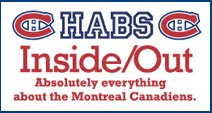





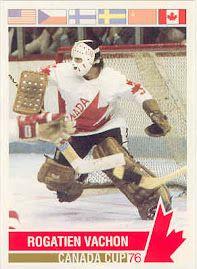
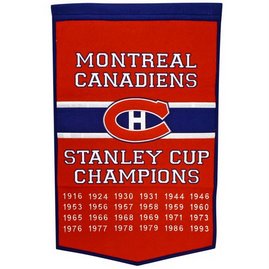







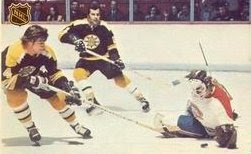



















































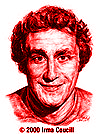



































































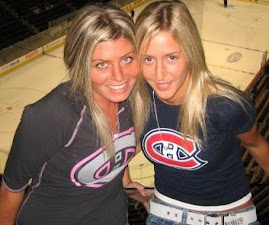


















4 comments:
Hi Robert!
As always, an informative read on some of the earliest history of our beloved Habs... and today even more so, in more ways that one!
Take a close look at the team photo at the top of this entry... what do you notice that's out of the ordinary? (other than the bulldog, I mean!)
Uniform numbers on the sweaters! They're placed 3/4 view on the right bicep, and look to be sewn onto the sweaters, instead of the armbands used the year before.
From what I can make out, Don Smith looks to be wearing #3 (or possibly a #8, since Laviolette was assigned #3 the previous year and one could assume tha he kept the same number. The bulldog masks most of where the number would be, but the hint of the upper left of a #3 might be there).
Newsy Lalonde is wearing a #4.
Ernie Dubeau seems to be sporting a #2. (which he wore the previous year)
You can make out the upper left corner of a #5 on Didier Pitre.
Hec Dallaire could be wearing a #7 (or possibly a #9, which he sported the year before).
Lou Berliquette has one on his arem, but I can't make it out.
Unfortunately, the rest of the players are positioned so that you can't see that part of their sweater to determine what numbers they might have been wearing, though it's safe to say the Vezina would have been sporting the goaltender's #1.
Here's the numbers I have for 1912-13.
1-Vezina
2-Dubeau
3-Laviolette
4-Lalonde
5-Pitre
6-Smith
7-Payan
8-Berlinguette
9-Dallaire
9-Povey
10-Jetté
11- Fréchette
11-Guevremont
No word on the bulldog's #!
You can see in that Ottawa-only alternate sweater the embryonic stages of the modern tricolore. Cool.
(I'm a bit of a sweater nerd. I loved seeing a Habs sweater I'd never seen before for 1911-12.)
Robert, I have a similar list of sweater numbers as yours but with one exception: #9 Dallaire...!?
If my sources are correct, Dallaire didn't play a single game for the Canadiens in 1912-13. He instead played in the MPHA with the Halifax Crescents for the entire season, leading the team in scoring.
Post a Comment